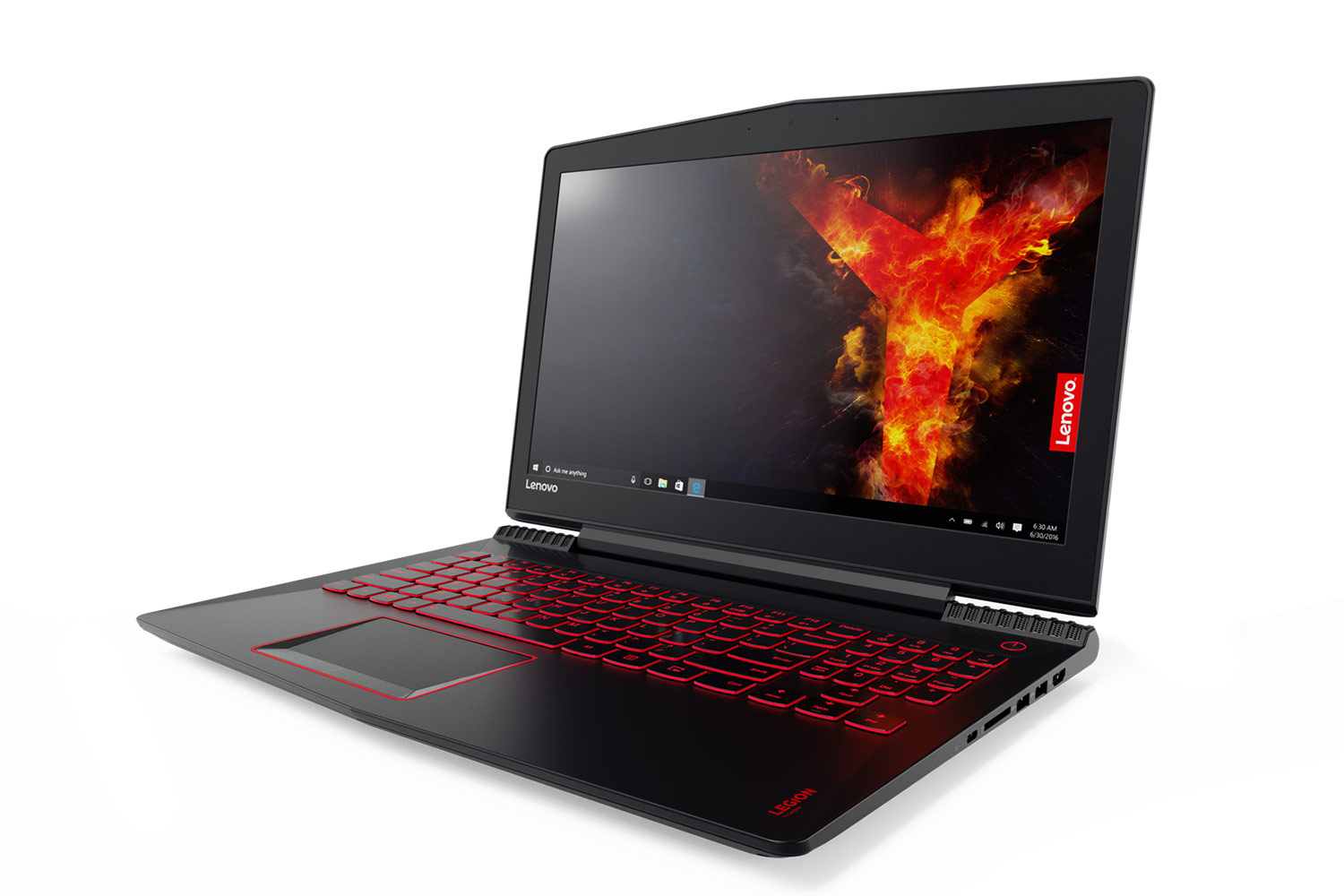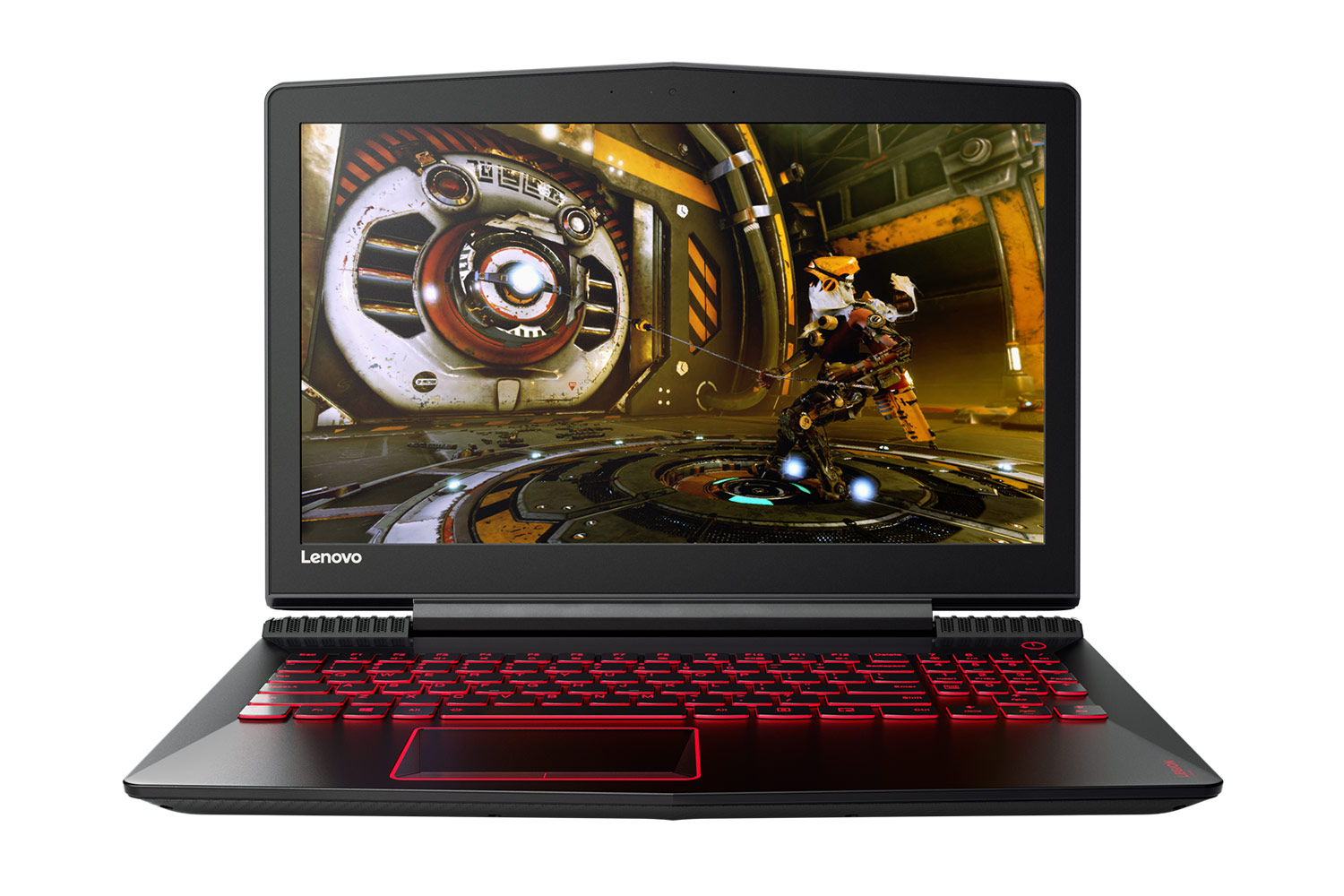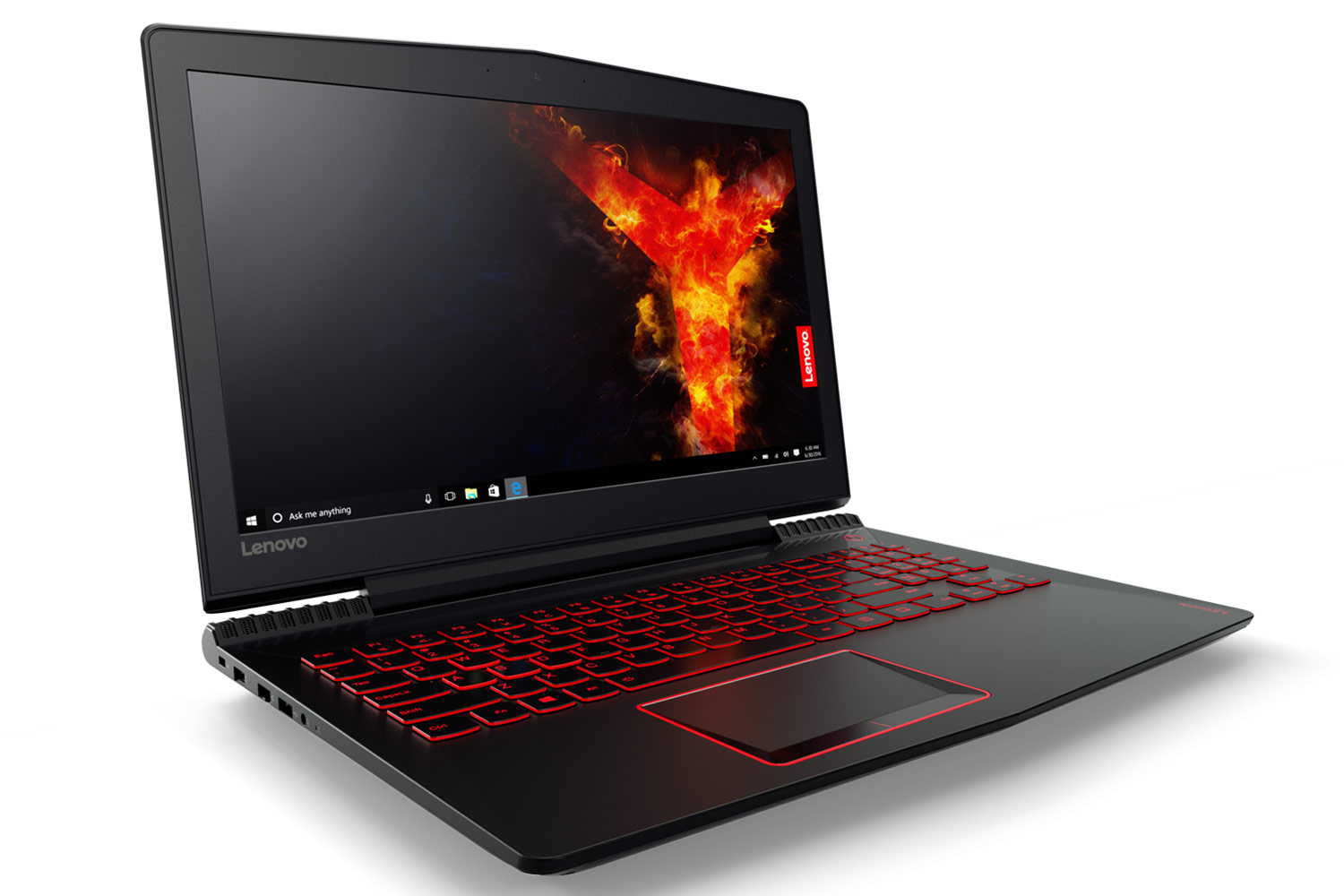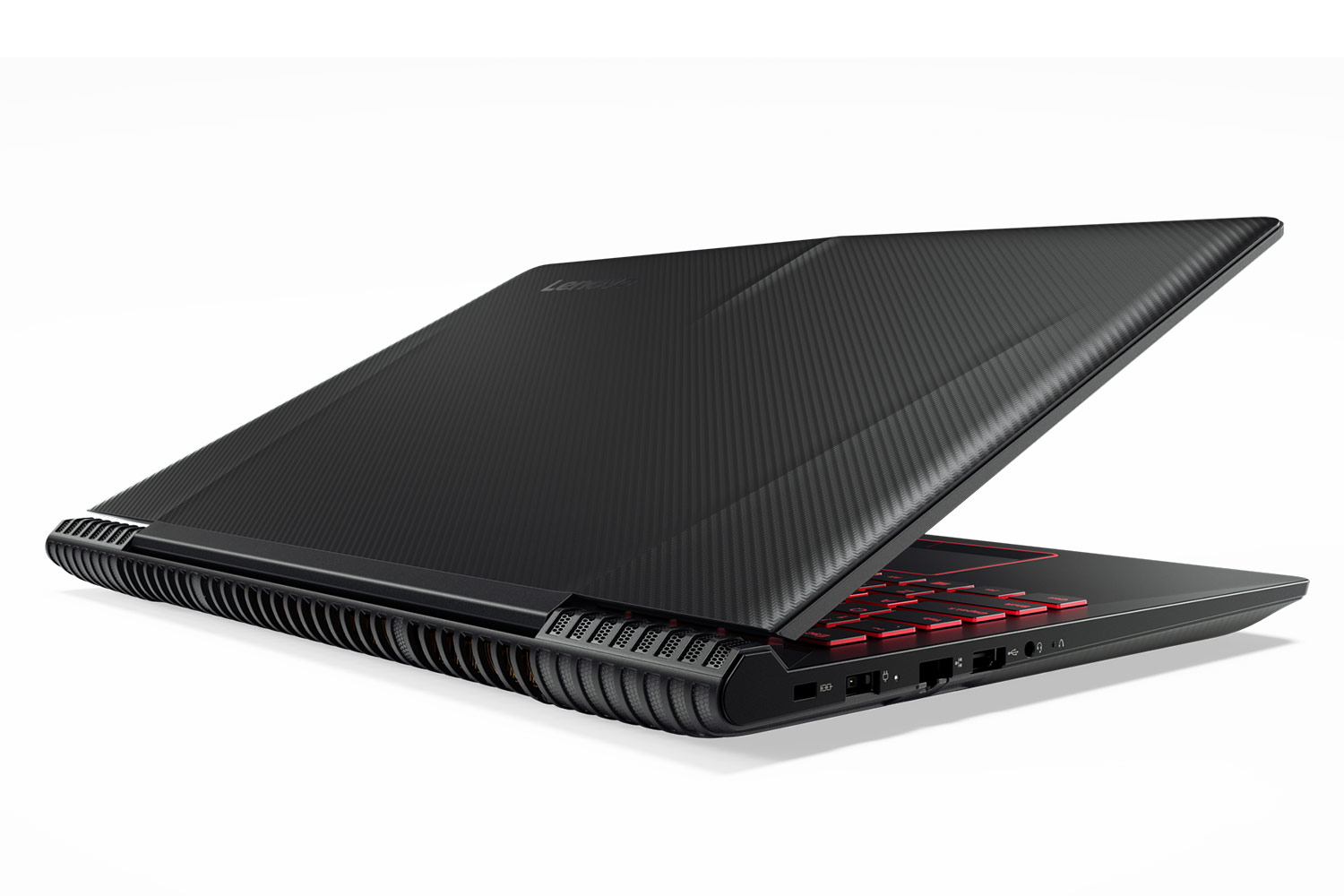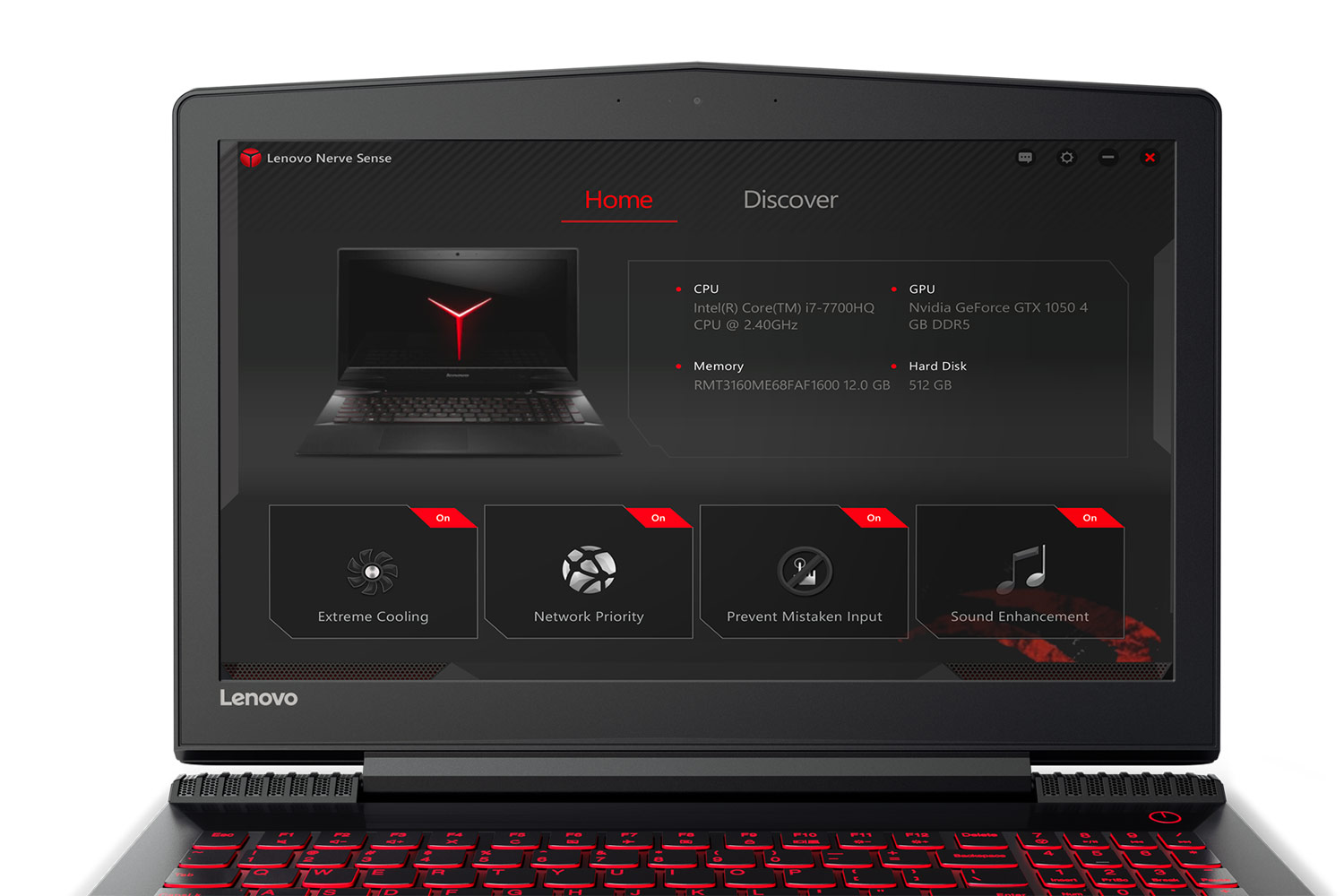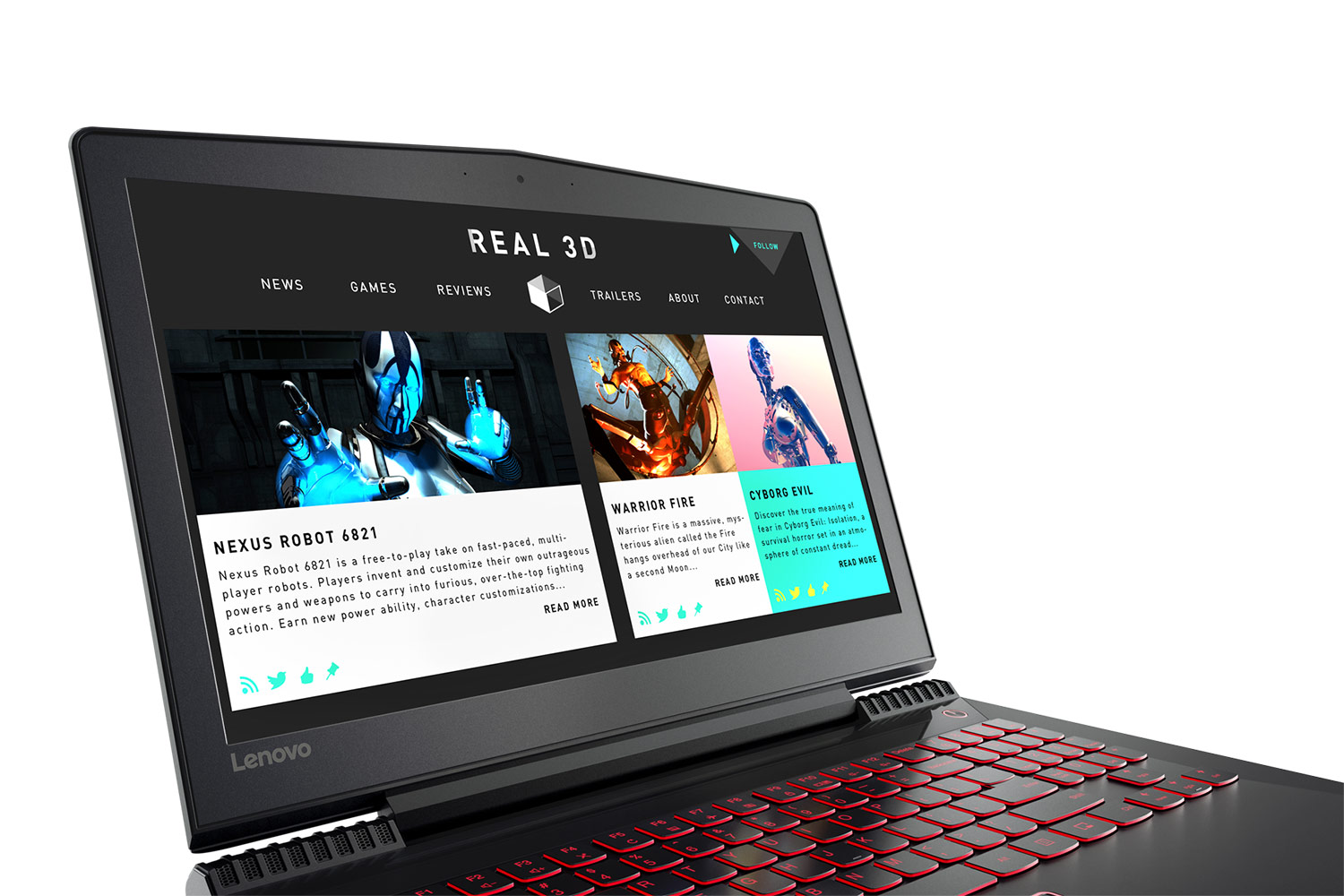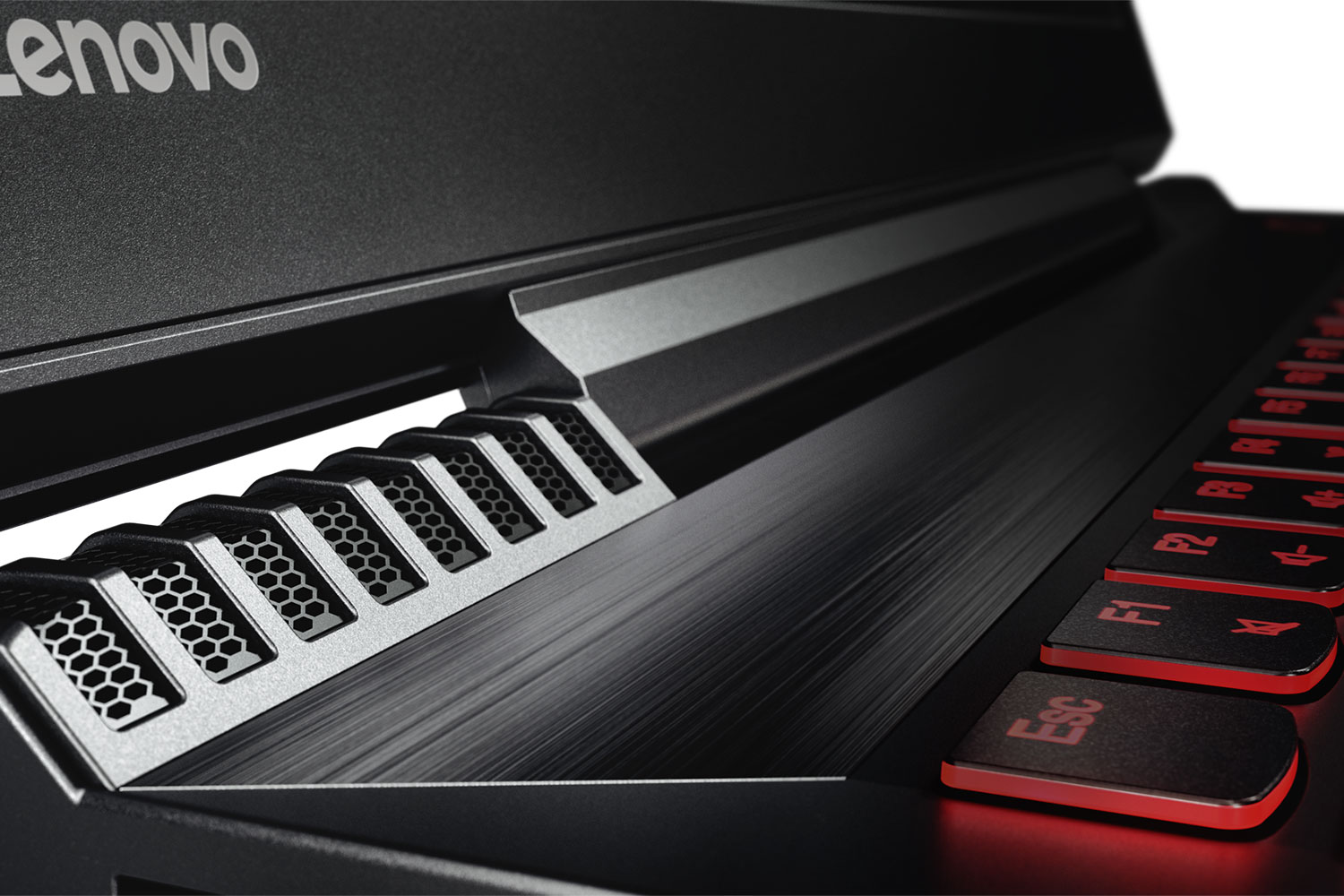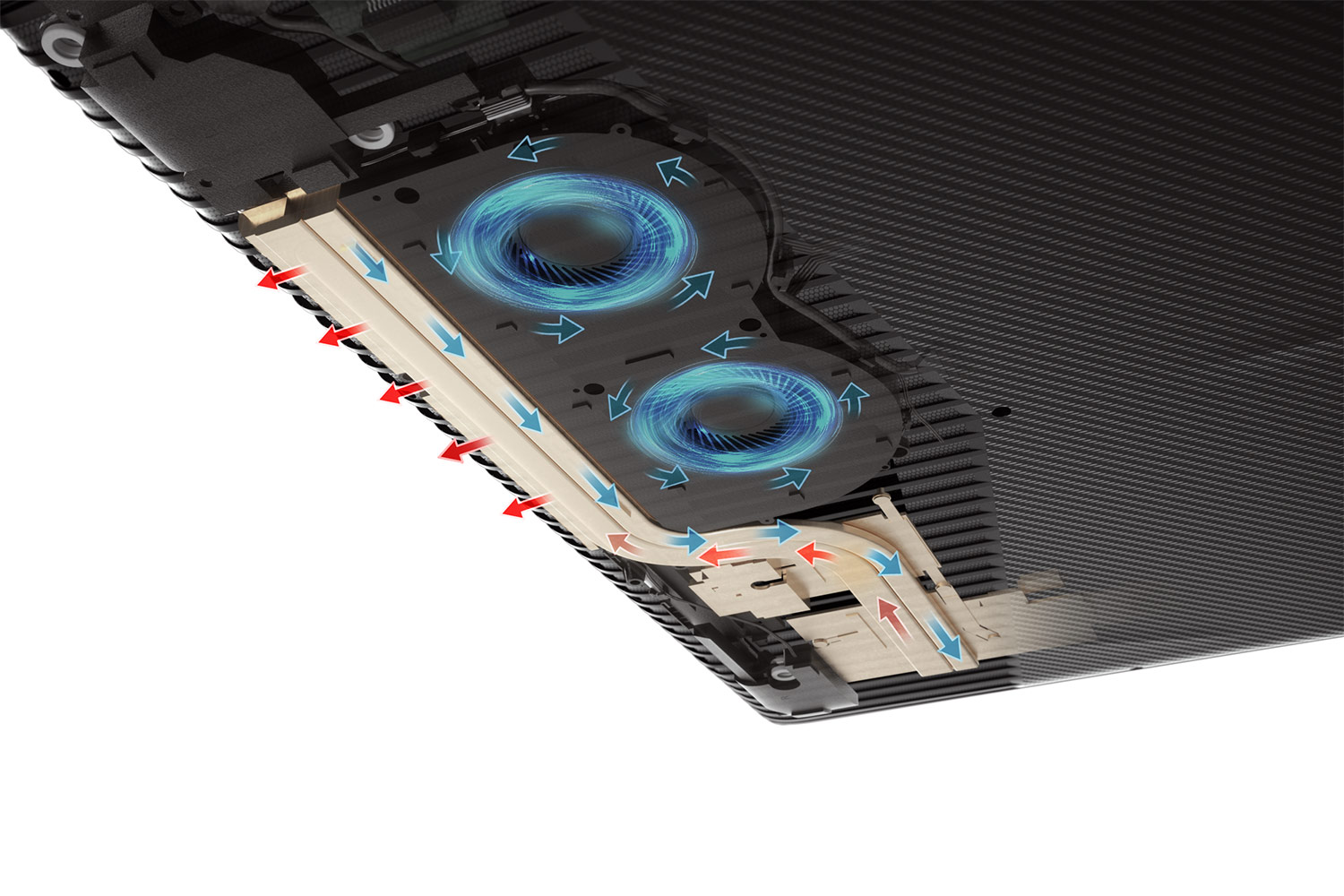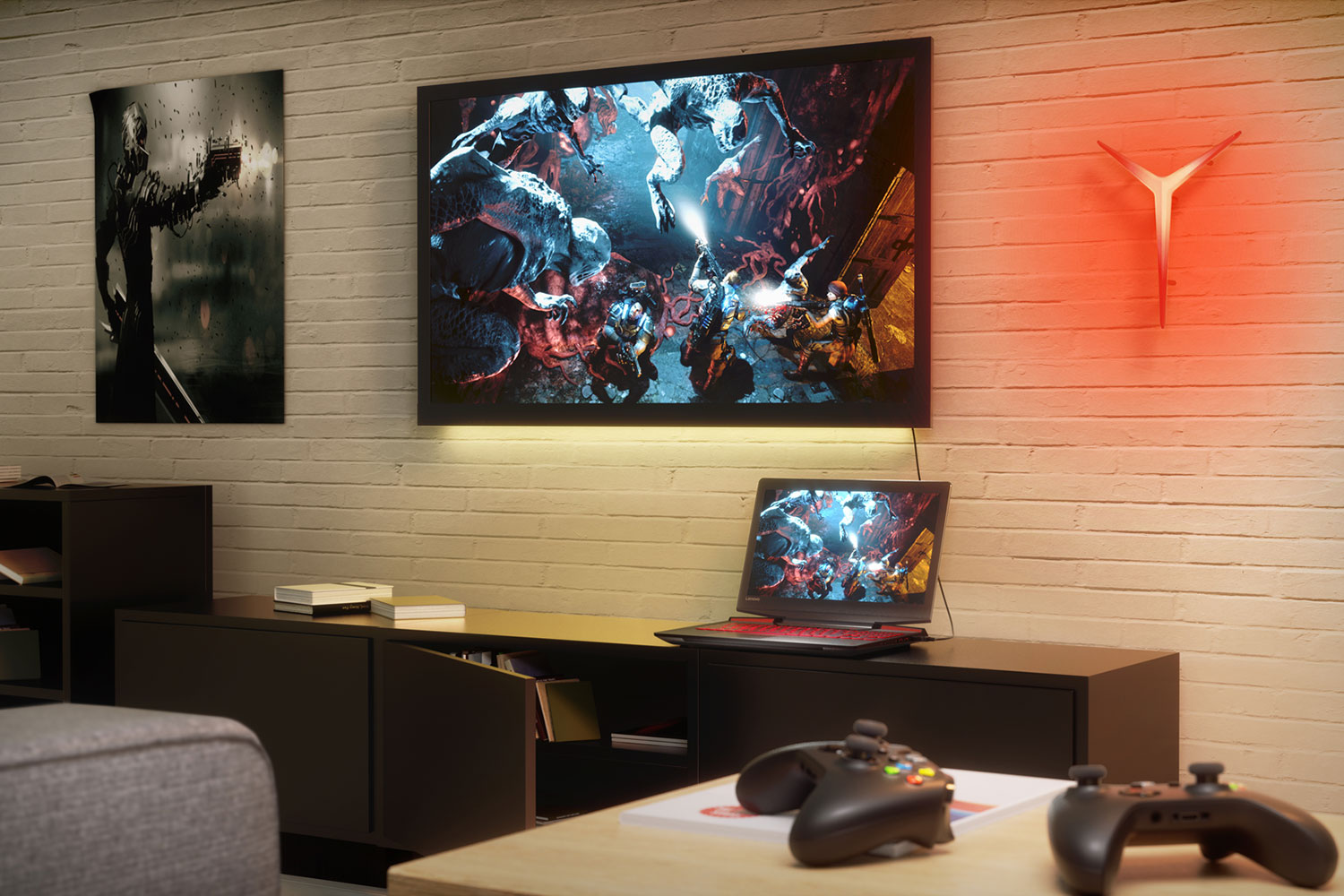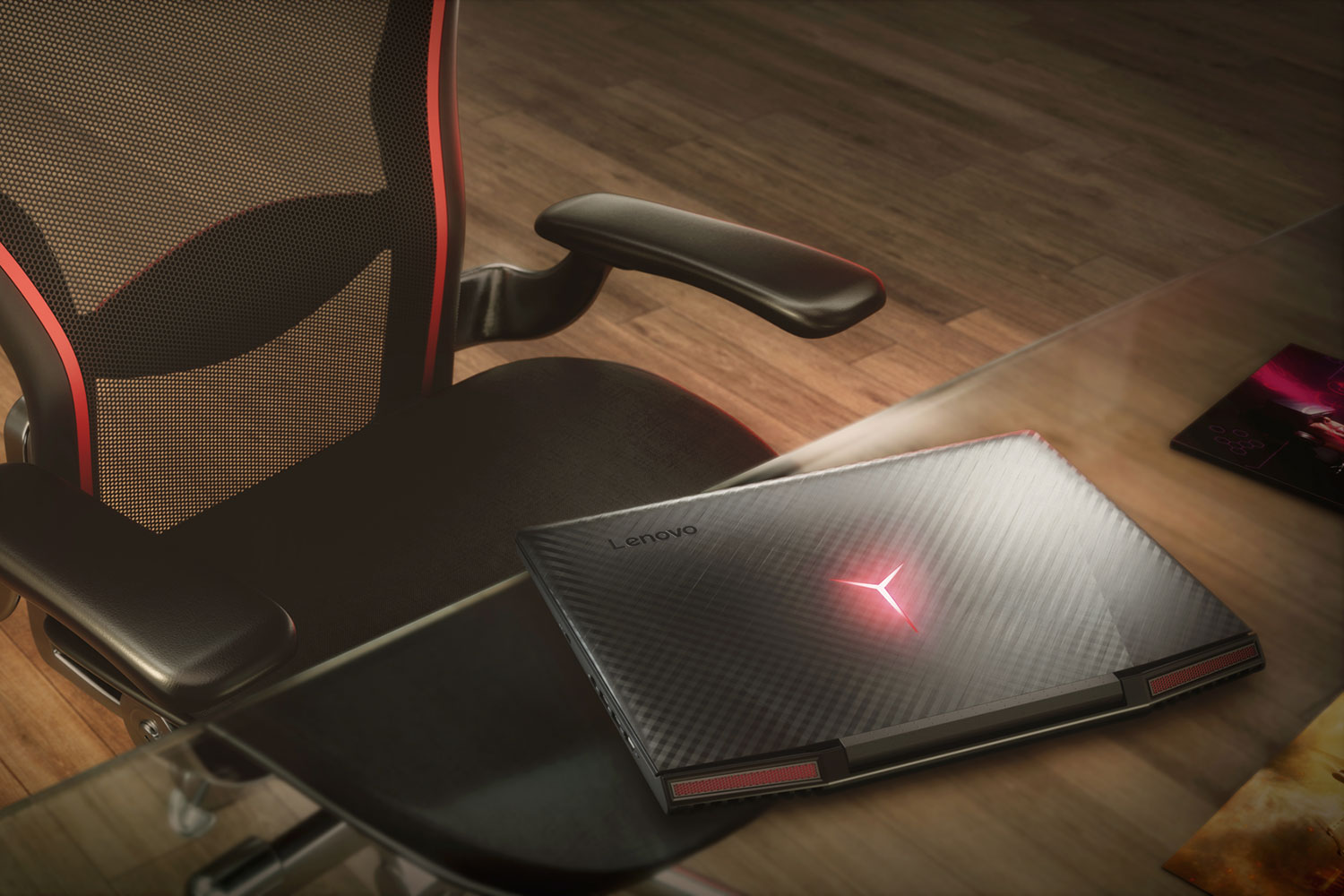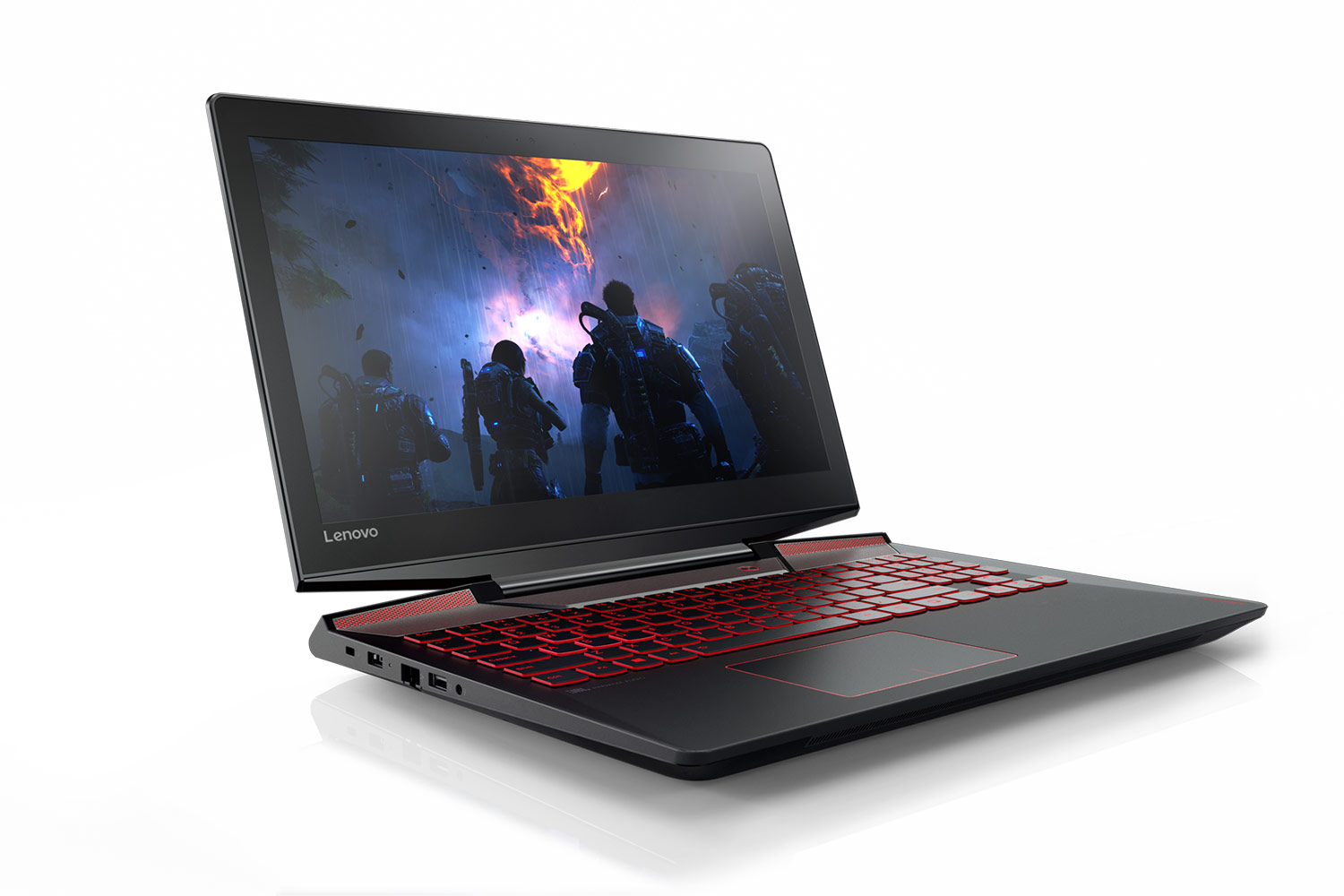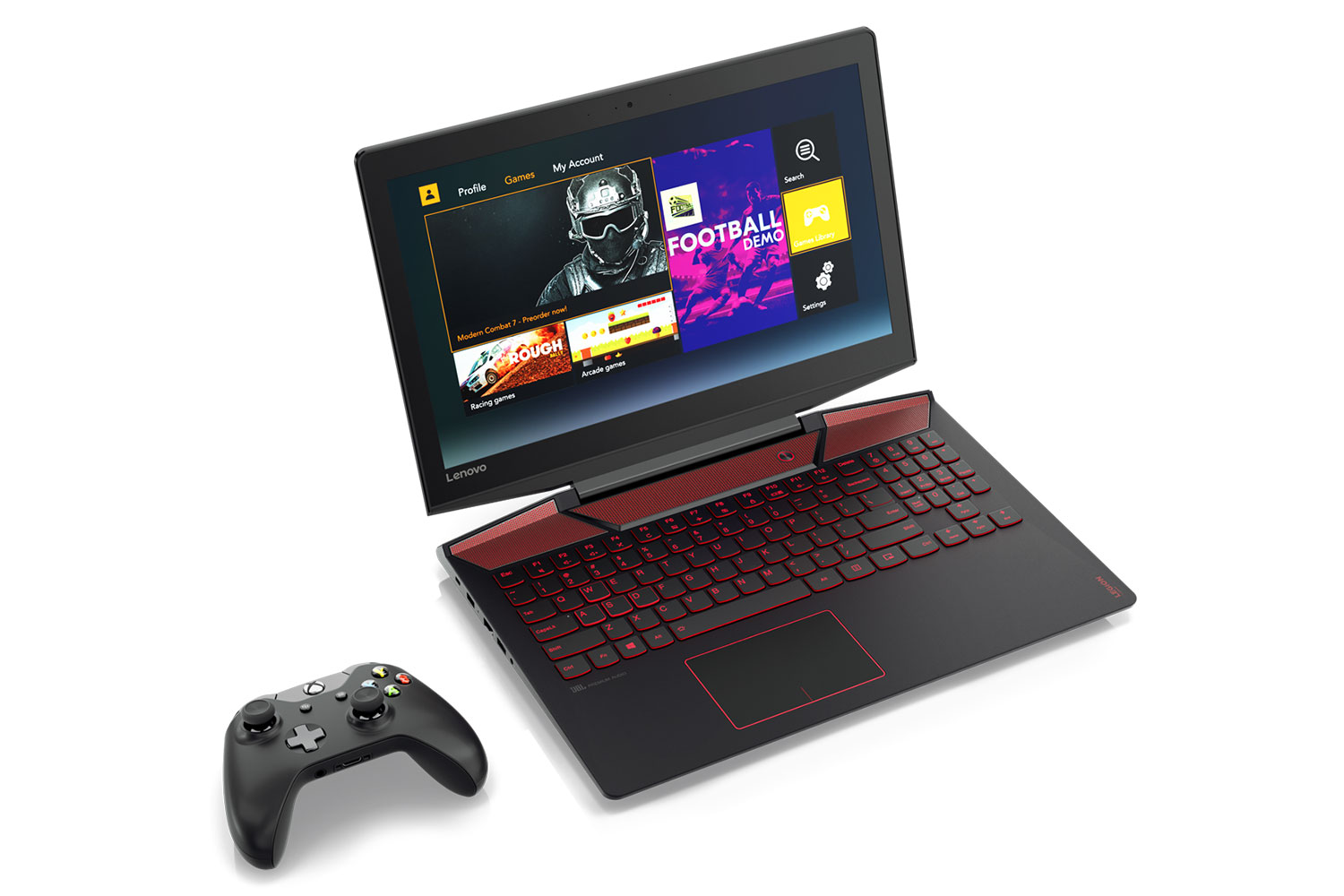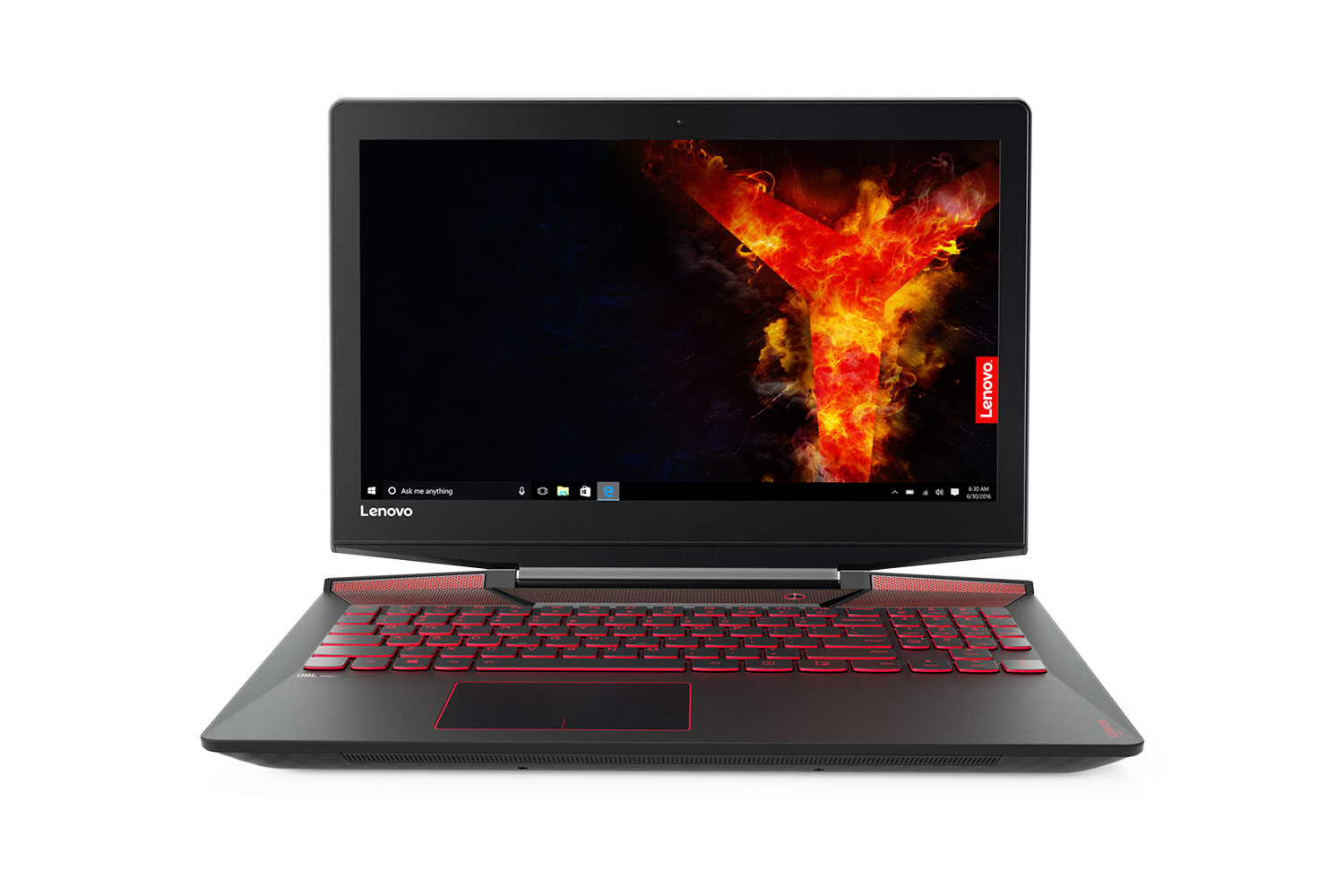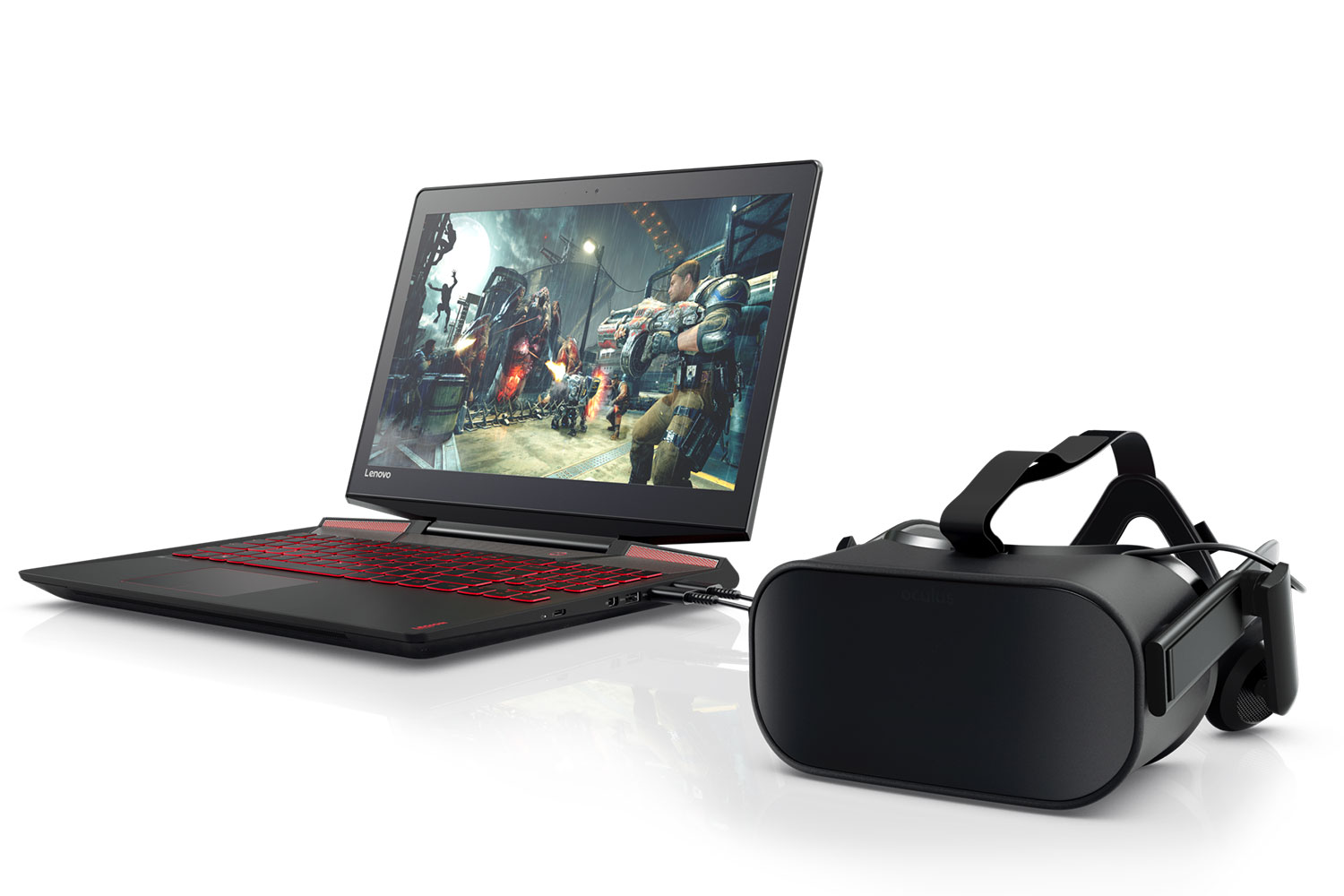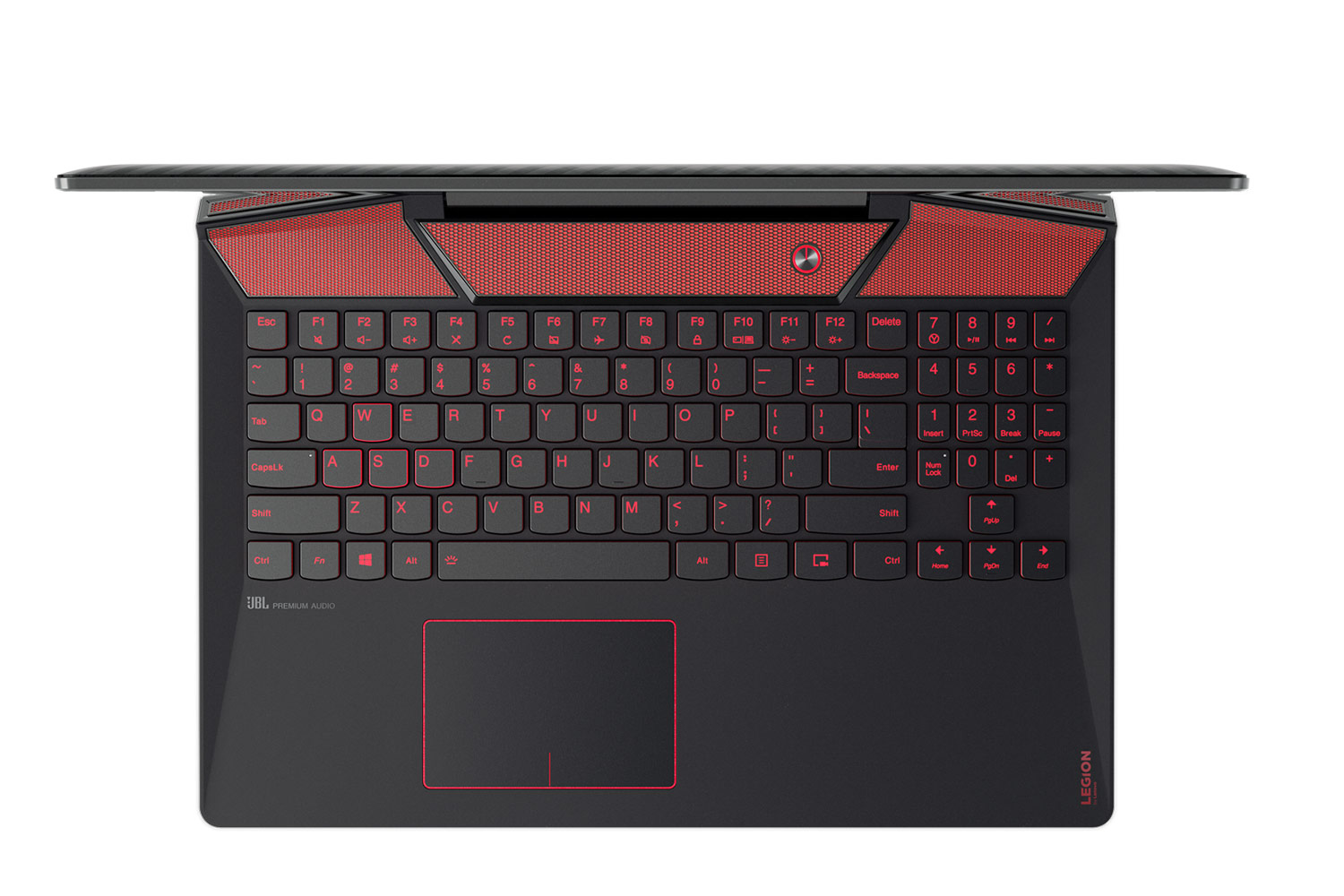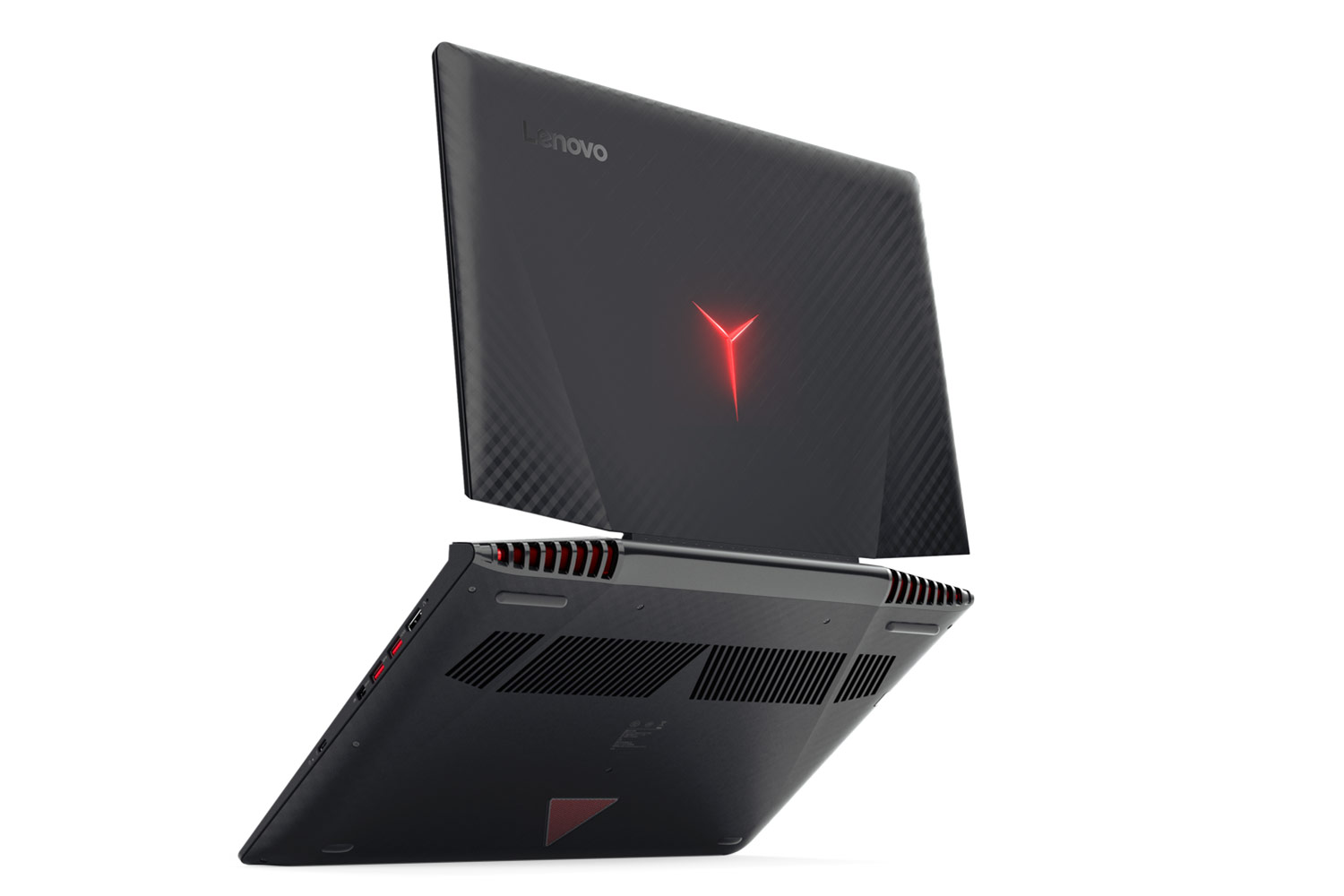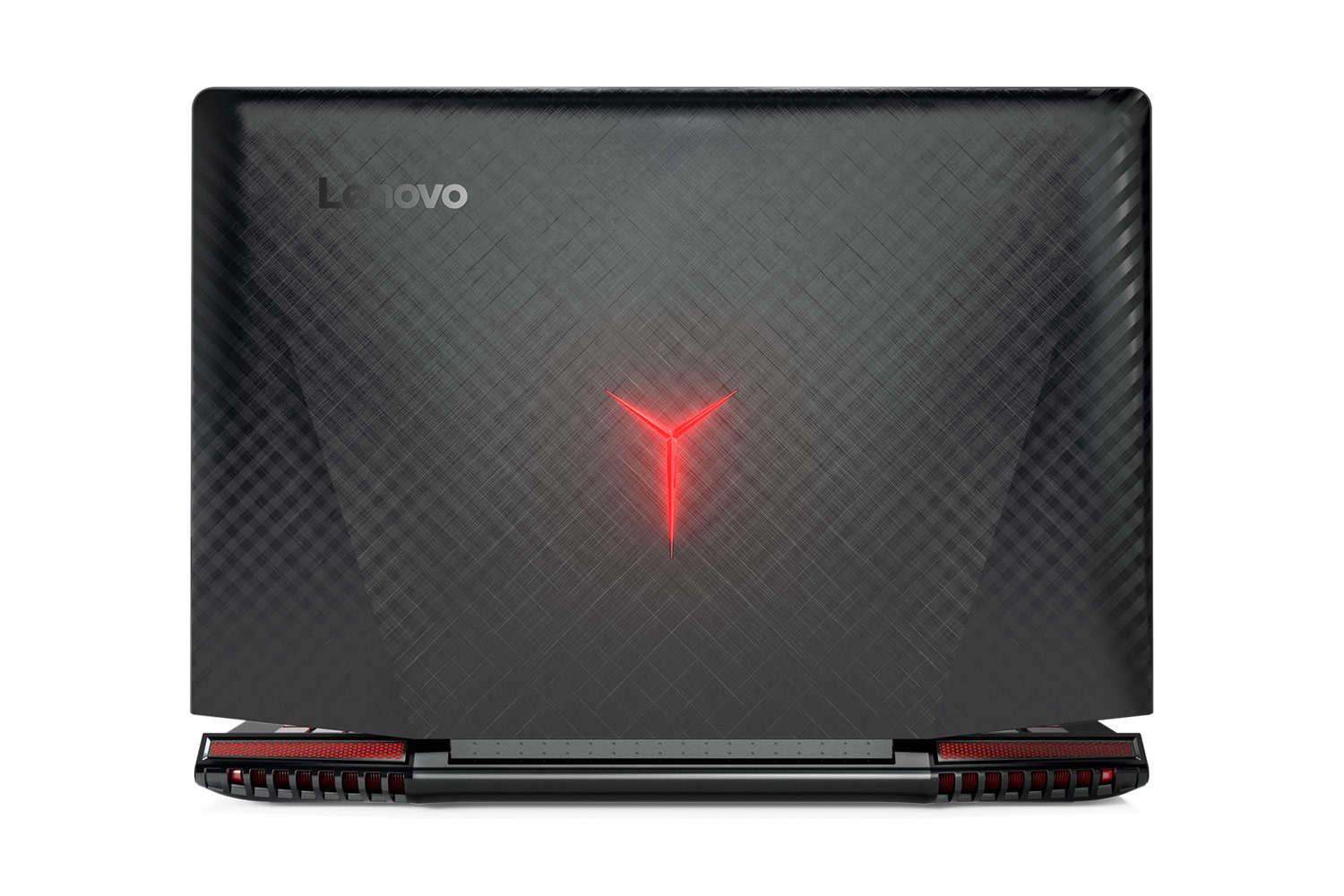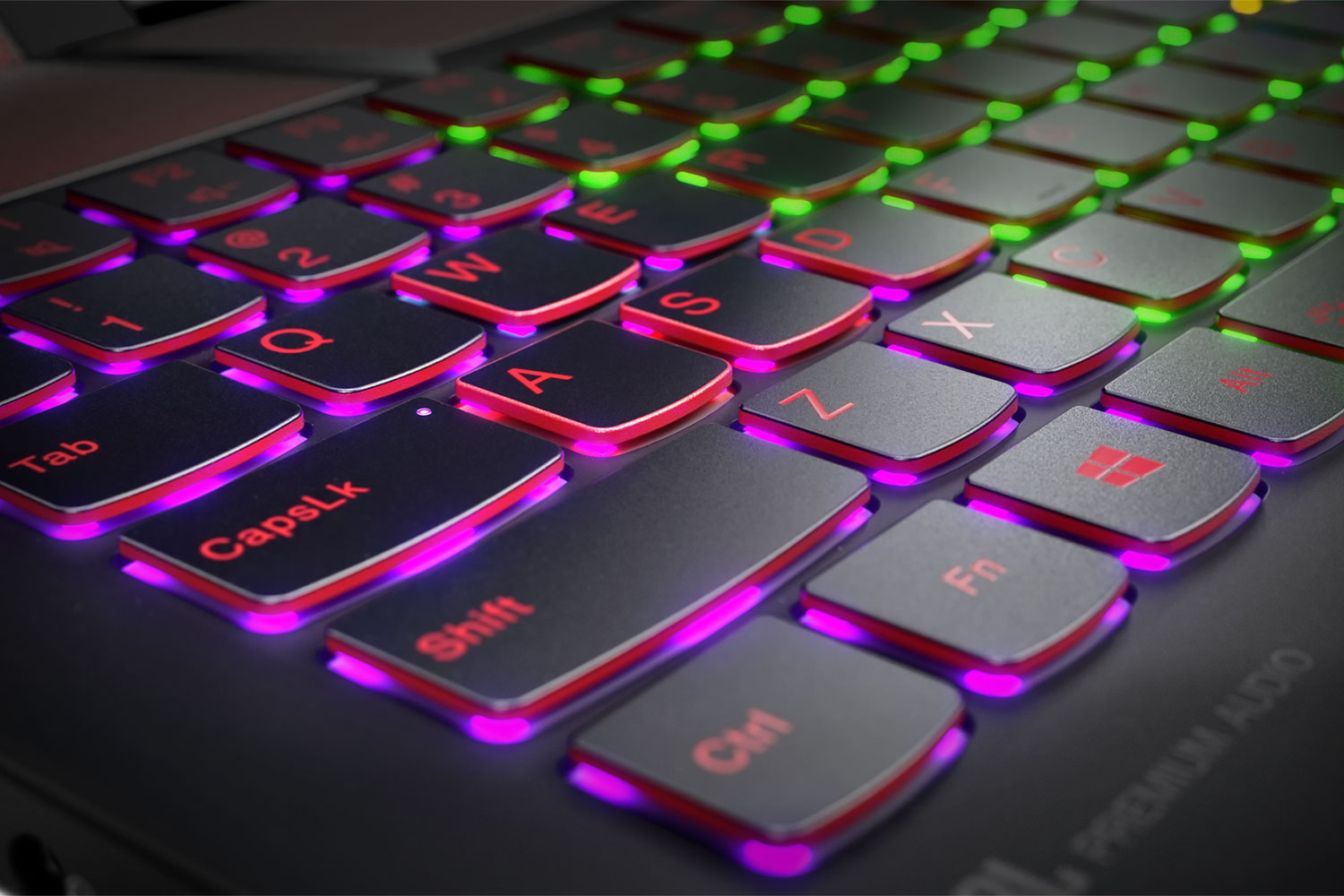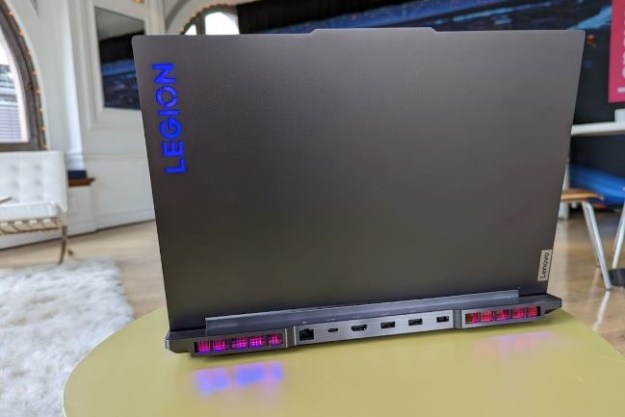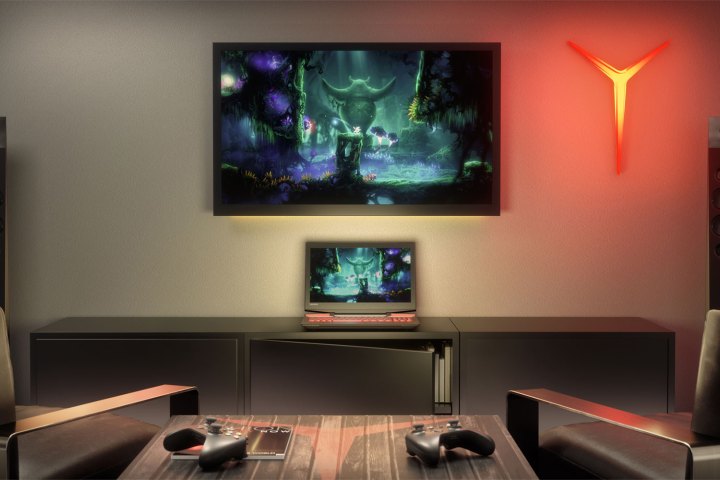
Lenovo Legion will offer gamers hardware that meets their technical specifications, boasting external designs that are a little more attention-grabbing than the company’s standard fare. The first two systems to be released as part of this effort are the Legion Y520 and the Legion Y720.
Lenovo Legion Y520
Lenovo describes its Legion Y520 laptop as “lean and mean” and looking at the system’s specs, it’s not too difficult to understand why. The PC has been designed with portability in mind, but there’s clearly been no compromise in terms of performance.
The most capable version of the Y520 packs an Intel seventh generation Core i7 processor, an Nvidia GeForce GTX 1050 Ti graphics card, and 16GB of DDR4 memory, with two SODIMM slots for further expansion. Buyers can select either a PCIe SSD as large as 512GB or a SATA HDD as large as 2TB.
Key Specs
- 15.6-inch, FHD display
- Core i7 processor
- GeForce GTX 1050 Ti
- 16GB DDR4
- 512GB SSD/2TB HDD
- Harman certified speakers
- Up to four hours of battery life
These specs should ensure that the system can run new releases, but Lenovo hasn’t stopped there — the Y520 has also been imbued with high-end audio-video components to ensure that games are presented at their very best.
A 15.6-inch full HD 1,920 x 1,080 IPS display will ensure that gamers can fully appreciate the graphical accomplishments of new releases. Meanwhile, a pair of Harman certified speakers with support for Dolby Audio Premium should draw them into the experience, even without a pair of gaming headphones.
On top of all that, the Y520 boasts a high-performance keyboard that can stand up to the strict requirements of gaming audiences. Its 1.7mm of key travel helps make sure that every keystroke is received accurately, while its optional backlighting feature helps users keep track of the length and breadth of the keyboard in low light conditions.
The Lenovo Legion Y520 is priced at $900 and will be available in February.
Lenovo Legion Y720
Lenovo’s Y520 might be a capable system for anyone looking to play games on the go, but the Y720 model is a bonafide portable battle station. This is a rig that is sure to deliver if it is sat on your lap, but it’s just as impressive when it is hooked up to a widescreen television in your living room.
Key Specs
- 15.6-inch UHD display
- Core i7-7700HQ processor
- GeForce GTX 1060
- 16GB DDR4
- 512GB SSD/2TB HDD
- Dolby Atmos audio
- Up to 5 hours of battery life
Buyers can select either a seventh generation Intel Core i5 or i7 processor and choose to include up to 16GB of DDR4 memory — like the Y520, two SODIMM slots are also available. In terms of storage, there are various options up to a 512GB PCIe SSD or a 2TB SATA HDD.
This amount of muscle should be more than enough to help users enjoy the latest virtual reality experiences. The Y720 is Oculus certified, guaranteeing compatibility with the popular headset.
If you’re not donning a headset, you will be able to take advantage of the system’s stunning display. Lenovo is offering two options; a 15.6-inch IPS screen with a 1,920 x 1,080 resolution, or a variant with a 3,840 x 2,160 resolution and anti-glare functionality. The Y720 is being billed as the world’s first Dolby Atmos PC, so both sound and vision are sure to impress.
The system is also fitted with a built-in receiver for Microsoft’s wireless Xbox One controller. This means that up to four players can sync their controllers to the PC to facilitate multiplayer sessions.
The Lenovo Legion Y720 is priced from $1,400 and will be available in April.
Editors' Recommendations
- I replaced my gaming laptop with a Legion Go, and I’m not going back
- Here’s how the M3 Max chip compares to the most powerful Windows laptops
- The Steam Deck and Nintendo Switch had a baby, and it’s Lenovo’s Legion Go
- Lenovo’s CES 2023 Legion laptops include AI ‘graphical wizardry’
- Lenovo unleashes an avalanche of monitors, including a 4K 144Hz beast

